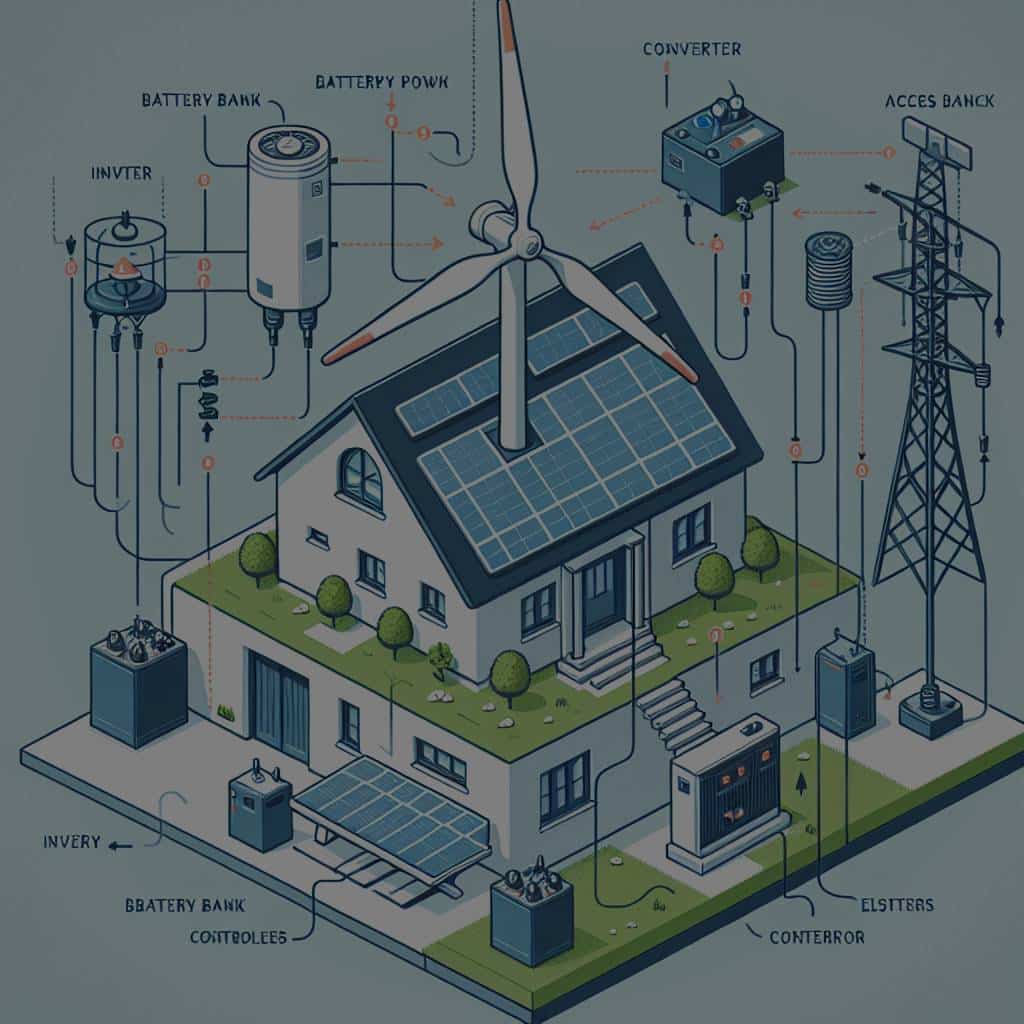How Can You Create a Small-Scale Wind Power System for Your Home?

As the world continues to grapple with the adverse effects of climate change, there’s growing interest in sustainable and renewable sources of energy. Harnessing the wind is a prime example of this, providing an inexhaustible source of energy that significantly reduces our reliance on fossil fuels. This article will guide you on how to establish a small-scale, wind-powered system to generate electricity at home.
Assessing the Viability of Wind Energy at Your Location
Before venturing into wind power generation, you must ascertain the feasibility of wind energy in your locality. Here, you will assess factors like wind speed, frequency, and direction, as well as local zoning regulations.
In the same genre : What Are the Best Tips for Eco-Friendly Waste Disposal in a Home Kitchen?
The average wind speed at your site needs to be above 5 meters per second (about 11 miles per hour) to make a small wind energy system worthwhile. You can obtain this data from local weather stations or even online databases that collate wind data.
It’s also crucial to understand the local zoning regulations in your area. Some towns or counties may have restrictions on the height of structures, including wind turbines. Do your due diligence and ensure you’re compliant with all relevant laws and regulations.
Have you seen this : What’s the Best Way to Soundproof a Nursery in a City Apartment?
Choosing the Right Wind Turbine for Your Home
Once your site assessment confirms the viability of wind energy, you can proceed to choose the right wind turbine for your home. Wind turbines come in different sizes and power ratings, so it’s important to find one that suits your energy needs and budget.
For small-scale systems meant for residential use, turbines that generate between 1 to 10 kilowatts are perfect. The cost of these turbines varies, typically ranging from $3,000 to $8,000 per installed kilowatt. The turbine’s size will largely depend on your electricity usage. An energy audit can help determine how much power you need.
In selecting a turbine, consider its durability, maintenance needs, and warranty. A well-built turbine will last over 20 years with regular maintenance, making it a worthy investment.
Designing and Installing Your Wind Power System
A typical wind power system for home-use includes a wind turbine, a tower to mount the turbine, electrical cables, and possibly a small solar panel system for times when the wind is not sufficient.
The height of the tower will determine the efficiency of the turbine, as wind speed increases with altitude. A rule of thumb is that the turbine should be mounted at least 30 feet above any obstructions within a 300-foot radius.
While you can undertake a DIY installation if you’re technically inclined, it’s best to hire a professional installer. They will ensure proper setup, optimal performance, and long-term durability of the system.
Integrating the Wind Power System with Your Home’s Electrical Grid
After installing the turbine, you need to integrate it with your home’s electrical grid. This involves drawing the electricity generated by the turbine into your home’s electrical system.
In most instances, you will still need to stay connected to your local electricity grid for times when the turbine doesn’t generate enough power. This is often the case when the wind speed is too low or during maintenance periods.
An interconnected system ensures that you can draw electricity from the grid when necessary. Conversely, if your turbine generates excess power, you can feed it back into the grid, further reducing your utility bill.
Factoring in the Economics of a Wind Power System
Finally, it’s crucial to consider the economics of installing a small-scale wind power system in your home. This involves looking at the upfront cost of the turbine, installation costs, possible tax credits, and potential savings on your electricity bill.
As mentioned earlier, the cost of a small wind turbine can range from $3,000 to $8,000 per installed kilowatt. The installation cost will depend on the complexity of the job, but it’s often a significant part of the total expense.
Nonetheless, the cost of the wind power system can be offset by federal, state, or local tax credits available for renewable energy projects. Additionally, by generating your own electricity, you can significantly reduce your monthly utility bills, making the wind power system pay for itself over time.
In summary, creating a small-scale wind power system for your home is a viable proposition. It not only serves as a sustainable energy source, reducing our global carbon footprint, but it also presents a sound financial investment over the long term. By following the steps outlined in this article, you are well on your way to harnessing the power of the wind for your home.
Maintaining Your Wind Power System
To sustain the efficiency and longevity of your wind power system, regular maintenance is vital. This is not only necessary for the optimal performance of your wind turbine but also to ensure safety.
A well-maintained wind turbine can last more than 20 years. It’s important to remember that like any mechanical device, wind turbines will experience wear and tear over time. Regular inspections will help detect and fix any potential issues before they become serious. Some of the parts that may need regular checking include the blades, gearbox, brake system, and electrical connections.
In addition, you should pay attention to the wind speeds at your location. Wind turbines are designed to withstand wind speeds within a certain range. If your area experiences wind speeds higher than what’s ideal for your turbine, it may cause damage. Therefore, it’s crucial to monitor your local weather forecast for any severe wind events.
Although you can perform some maintenance tasks yourself, such as basic visual inspections or cleaning, it’s advisable to have a skilled technician carry out more complex tasks. They can perform comprehensive inspections, carry out repairs, and replace worn-out parts, ensuring your wind power system functions efficiently for many years.
Conclusion: Harnessing Wind Energy for a Sustainable Future
In an era where renewable energy is gaining traction, installing a small wind power system at your home can be a valuable investment. Not only will you be utilizing a sustainable and inexhaustible source of energy, but you can also significantly lower your electricity bills and even earn from selling back excess power to the grid.
The process of setting up the wind power system involves assessing your wind resource, choosing the right wind turbine, designing and installing the system, integrating it with your home’s electrical grid, and implementing a maintenance plan.
However, it’s important to remember that like any other investment, it requires an initial capital outlay, regular maintenance, and adherence to local regulations. It’s also vital to consider the average wind speed at your property and the suitability of axis turbines for your specific needs.
While the upfront costs can be substantial, various federal, state, or local tax credits for renewable energy systems can help offset these expenses. Plus, the potential savings on your monthly energy bills can make this investment worthwhile in the long run.
By adopting small wind power systems, we are taking a significant step towards reducing our reliance on fossil fuels and promoting a more sustainable and cleaner future. As technology advances, wind energy promises to be an even more efficient and affordable source of power for our homes. Harnessing the power of the wind is indeed a viable and beneficial initiative for both the planet and your wallet.
